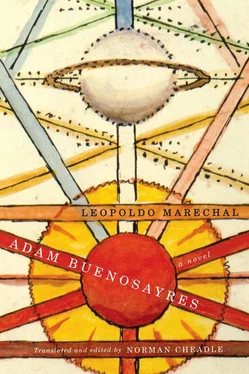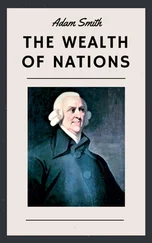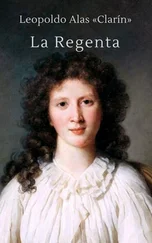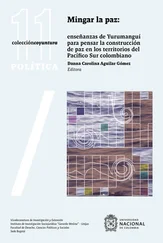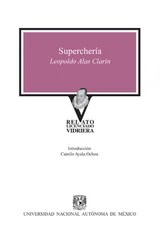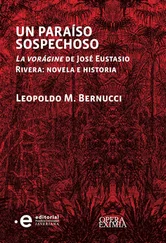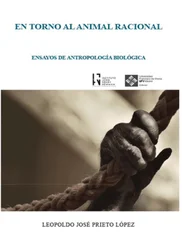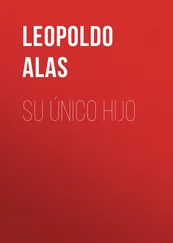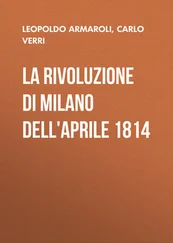27 Besides the appropriation of Ortega y Gasset’s mask metaphor in this episode (641n25), at this juncture there is likely a more respectful allusion to the same leitmotif in Jacobo Fijman’s best-known book of poetry, Molino rojo (1926). The figure of masks, always in the plural, is key in the poem thus titled, “Máscaras” [Masks], as well as in “Feria” [Fair], but perhaps most significantly in the famous first poem of the collection, “Canto del cisne” [Swan Song]: “Oficios de las máscaras absurdas; pero tan humanas” ( Poesía completa 36) [Offices {in the sense of liturgical offices} of masks that are absurd but so human]. This line follows upon the first two verses of the poem, the most oft-quoted of Fijman’s poetry: “Demencia: / el camino más alto y desierto” [Dementia: the highest and most deserted road]. For a perceptive commentary on this poem, see Melanie Nicholson (105–8).
28 Ombú or Phytolacca dioica : a large tree of immense girth (up to fifteen metres) and luxuriant foliage. Considered to be the only tree native to the pampas of Argentina and Uruguay, it has thus become their symbol. The tree’s sap is poisonous; hence the folk wisdom, alluded to by Adam, about the unhealthy quality of the ombú’s shadow.
29 Federico Lacroze (1838–1899): owner of Tramway Central, the company that established the first streetcar line in Buenos Aires in 1870.
30 In the neo-colonial economy of Argentina during the latter decades of the nineteenth century and the first decades of the twentieth, the large market share enjoyed by English woollen products, in detriment to locally produced woollens, was an especially sensitive issue.
31 Natura naturata (nature as created entity or system) and natura naturans (nature as creative force or process): medieval Latin terms, the latter attributed by the OED to a translator of Averroes and later associated with Spinoza.
32 Sofrosyne : ancient Greek term for healthy-mindedness and serenity through moderation.
33 This invented name is a Rabelais-style joke: Asinus (Latin “ass”); Paleologos (Greek, “versed in things ancient”).
BOOK TWO, CHAPTER 1
1 “Argentine epic,” for argentinopeya in the original (see 642n9).
2 Antaeus, in Greek mythology, was son of Poseidon and Gaia, and of gigantic strength.
3 Saint Vitalis, whose feast day is 28 April, was martyred in Bologna in the third century. Titular saint of the basilica at Ravenna.
4 Teatro Colón . Magnificent opera house and theatre in downtown Buenos Aires, inaugurated in 1908, two years before the centenary celebration of Argentina’s nationhood. A proud symbol of Argentina’s wealth and success in its project of liberal modernization.
5 The quote from Hamlet is in English in the original Spanish text.
6 Quia tempus erit amplius (Vulgate Bible, Apocalypsis 10:6), phrase spoken by an angel to the seer of Patmos. In the NSRV: “there will be no more delay” (Rev 10:6); the angel continues: “but in the days when the seventh angel is to blow his trumpet, the mystery of God will be fulfilled” (Rev 10:7).
7 “¡Melpómene, la musa de la tragedia viene!” First verse of “Pórtico de Melpómene” from Melpómene (1912) by Arturo Capdevila (1889–1967), whose romantic poetry appealed to a wide public.
8 Berta Singerman (1901–1998), singer, reciter, and stage and film actress. A Russian immigrant to Argentina, she was famous for her recitations throughout Spanish America (Barcia 242n). She starred in the silent film La vendedora de Harrods (1920 or 1921) [The Salesgirl at Harrods].
9 Chrysopæia means, etymologically, the “making of gold.” The term comes from the medieval science of alchemy, the source of Adam’s metaphor. The Spanish crisopeya echoes the neologism argentinopeya , coined in Adam’s interior monologue above, which etymologically means the “making of silver,” though the term in its context further suggests a combination of the words Argentina and epopeya (“epic”) or the Argentine epic that will fuse the many disparate ethnicities into the noble metal of a national identity. Later, Marechal will didactically distill this metal symbolism in a poem (“Didáctica de la Patria” in Heptámero n [1966]): “El nombre de tu Patria viene de argentum […] En su metal simbólico la plata / es el noble reflejo del oro principial. / Hazte de plata y espejea el oro / que se da en las alturas, / y verdaderamente serás un argentino ” ( OC I, 311; Marechal’s italics) [The name of your Nation comes from argentum […] In its symbolic metal, silver / is the noble reflexion of the original gold. / Make yourself silver and mirror / the gold of the heavens, / and truly you will be an Argentine ].
10 The allusion is to Arturo Capdevila, native of Córdoba, who had a doctorate in Law and Social Sciences. Capdevila’s poem “Pórtico de Melpómene” (see 642n7) allegorizes the poet’s pursuit of the tragic muse (Melpomene) as a chase through the woods at midnight ending in erotic violence: “Después, junto a la margen de una fuente, / cayó… ¡Caíste! ¡Puesto que eras tú misma! Estabas / pálida como ahora… Temblabas… ¡Oh, temblabas / como ahora!… Caíste vencida, agonizante… / Y yo rodé por tierra, demelenado, hipante, / y comencé a besarte, y comencé a morderte, / como quien va a matarte, por fin, o a poseerte!… ( Primera antología 30) [Later, by the side of a fountain, / she fell… You fell!… Because it was you ! You were / pale as now… Trembling… Oh, you were trembling / as now!… You fell in defeat, agonizing… / And I tumbled to the ground, dishevelled, gasping, / and I started to kiss you, and to bite you, / like someone about to kill you, finally, or to possess you!…]. In his next comment, Adam parodies this episode. Capdevila’s poem alludes to Clytemnestra’s murder of Agamemnon in the tragedy by Aeschylus, from which Ruth will presently recite a few lines.
11 Allusion to the 1928 tango “Duelo criollo,” a ballad recounting the duel between a payador and a card shark over a suburban girl known as the “flor del barrio” [flower of the barrio]. Both men get killed, and out of grief the pretty girl opens her wings and flies up to heaven.
12 Free translation from the original: “— ¿Quién se comió el puchero?” [Who ate the stew?] / “— El del sombrero” [The one with the hat].
13 “Entre San Pedro y San Juan / hicieron un barco nuevo.”
14 El Hogar, El Gráfico, Mundo Argentino . Popular magazines in 1920s and 1930s Buenos Aires.
15 Carmen (1875), opera by Georges Bizet. Cavalleria rusticana [Rustic Chivalry] (1890), by Pietro Mascagni.
16 Río Negro. A fertile region of Patagonia (southern Argentina), famous for its fruit. Ironic transposition to Argentina of the legendary apple that started the Trojan war.
17 Which-from-a-metal-takes-its-name. Reference to Argentina, derived from the Latin argentum “silver.”
18 Maldonado Creek. The arroyo Maldonado was originally one of several large ditches that drained excess rainwater into the Río de la Plata. Urban development has covered over most of them. Since 1937 the Maldonado has been running through pipes beneath Juan B. Justo Avenue. Marechal’s characterization is obviously ironic.
19 La Paternal. A barrio or neighbourhood adjoining and to the west of Villa Crespo.
20 “All is quiet for half an hour.” Curious allusion, passed over by most of Marechal’s commentators, to the Book of Revelation (8:1): “When the Lamb opened the seventh seal, there was a silence in heaven for about half an hour.” This is one of many other, more obvious allusions in the novel to the New Testament Apocalypse.
Читать дальше
